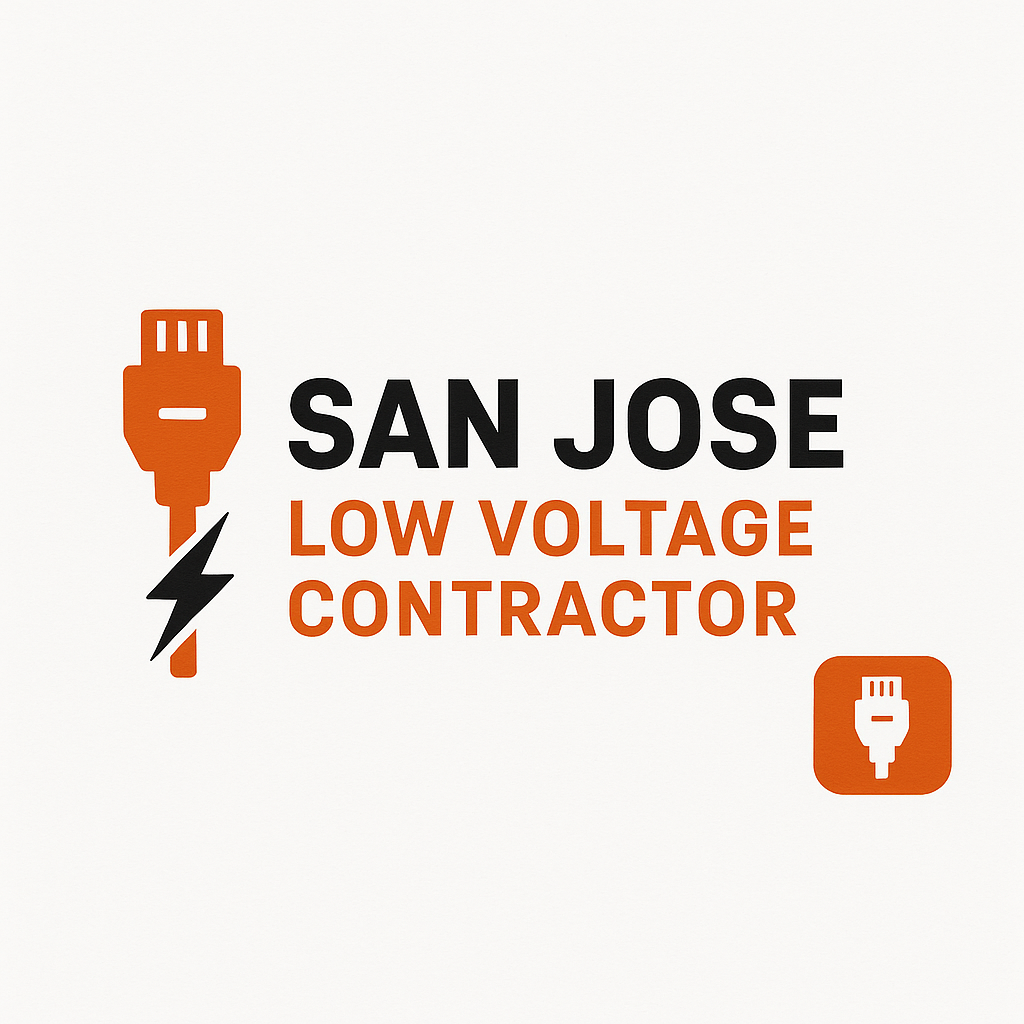Low Voltage Cabling for Offices in San Jose — Best Practices & Insights
When setting up or upgrading an office in San Jose, one of the most critical yet often overlooked infrastructure components is the low voltage cabling system. These cables carry power to security systems, fire alarms, network devices, access controls, video surveillance, and more. Getting your low voltage cabling right from the start ensures reliability, scalability, and compliance with local standards. In this blog, you will find a comprehensive guide about office low voltage cabling in San Jose—covering key considerations, design best practices, regulatory tips, technology trends, and frequently asked questions.
Why Low Voltage Cabling Matters in Offices
1. Support for Modern Technologies
Offices today increasingly rely on systems such as VoIP phones, security cameras, badge access, Wi-Fi access points, and building automation systems. All these depend on a reliable low voltage backbone.
2. Reliability and Uptime
Poor cabling results in dropped connections, signal interference, or unexpected failures. High-quality cabling ensures minimal downtime, which is crucial in competitive business settings like the Silicon Valley region.
3. Scalability and Future-Proofing
A well-designed cable infrastructure can accommodate additions or changes—adding camera nodes, sensor devices, or upgraded network segments without requiring full rework.
4. Safety and Compliance
Low voltage cabling must follow electrical and building codes. In San Jose offices, compliance with California’s electrical and building standards is essential for inspections, permits, and insurance.
Key Components & Types of Low Voltage Cabling in Offices
Structured Cabling (Category Cables)
- Cat 5e / Cat 6 / Cat 6A / Cat 7 — used for data, voice, and PoE (Power over Ethernet)
- Fiber optics (single-mode, multi-mode) — used for high bandwidth backbones or long runs
Coaxial Cables
Often used in legacy video deployments or some surveillance systems.
Security and Alarm Wiring
Cables for intrusion detection, fire alarms, motion sensors, access control panels.
Audio/Visual Cabling
HDMI, DisplayPort, or other AV signal cables connecting conference room systems, public announcement systems.
Control and Automation Wiring
Low voltage wires for environmental sensors, lighting control, HVAC control, IoT sensors.
Design Best Practices for Office Low Voltage Cabling
Segregation and Pathways
Keep low voltage cables physically separated from high voltage conductors to minimize interference. Use separate conduits, trays, or raceways when routing near power lines.
Cable Length Limits
Respect standard maximum distances—for example, 100 meters for twisted pair Ethernet segments. For longer runs, deploy switches or fiber to maintain signal integrity.
Proper Terminations and Testing
Use certified connectors and perform testing (e.g. cable certification, return loss, crosstalk, continuity). Document every run and keep records of test results.
Future Capacity
Design with spare capacity. Leave open conduits, extra pairs, slack loops in cable runs so upgrades or additions can be made without tearing down walls.
Labeling and Documentation
Label each cable, patch panel port, endpoint, and connection. Maintain an as-built schematic of the cabling infrastructure. Good documentation helps maintenance and troubleshooting.
Grounding and Bonding
Although low voltage circuits typically don’t carry high currents, grounding and bonding practices (especially for shielding) are still important. Follow manufacturer guidelines.
Compliance with Codes
Ensure compliance with the California Electrical Code, networking standards (e.g. TIA/EIA), and fire and life safety codes. Cables passing through fire walls or plenum spaces must meet fire-rating requirements.
Local Considerations in San Jose
Climate Effects
Though milder than many regions, variations in temperature and humidity in Santa Clara County can affect cable performance over long periods. Use rated cables and allow proper ventilation in closets and risers.
Seismic Activity
San Jose is in an earthquake zone. Cable installations must allow flexibility—with slack loops and strain relief—to tolerate vibration or movement without damage.
Building Permit and Inspection
Offices in San Jose require compliance with city building inspections and electrical permitting. Low voltage systems often get reviewed as part of the overall fire alarm or security systems. Ensure installers understand local permit workflows and inspector requirements.
Technology Ecosystem
Given San Jose’s proximity to tech industry hubs, offices may demand higher bandwidth, more robust redundancy, or more advanced automation systems than average. Planning ahead for such high demand sets you apart.
Emerging Trends & Innovations
- Power over Ethernet (PoE) Upgrades — newer standards like PoE++ allow devices to draw more power (for lighting, displays, etc.) directly over structured cabling.
- Hybrid Fiber/Copper Architectures — mixing fiber backbones with copper last-mile runs to balance cost and performance.
- Intelligent Infrastructure Sensors — embedding environmental, occupancy, and monitoring sensors into the cabling infrastructure.
- Converged Systems — combining security, network, automation, and audio over a unified low voltage platform.
- Remote Monitoring & Diagnostics — real time monitoring tools to detect cable degradation or faults before they disrupt operations.
Real-World Scenario (Hypothetical)
Imagine an office building in downtown San Jose planning a technology refresh. The IT team decides to:
- Replace all legacy Cat 5e with Cat 6A for improved headroom
- Install fiber backhaul between floors
- Add cameras with PoE++ support
- Deploy badge access, motion sensors, and environmental sensors
- Plan spare conduits and extra pairs for future expansion
By following good practices—slack loops, labels, adherence to code, separation from power, and proper documentation—they avoid a major rewire later when technology demands increase.
Conclusion
A robust, well-designed low voltage cabling system is foundational to modern office infrastructure in San Jose. It enables scalable connectivity, reliable operations, and integration of critical systems like security, data, and automation. By adopting best practices, adhering to local codes, and planning for the future, you can create a cable infrastructure that supports evolving technology without costly rework. Investing in sound cabling is investing in long-term stability and flexibility.
